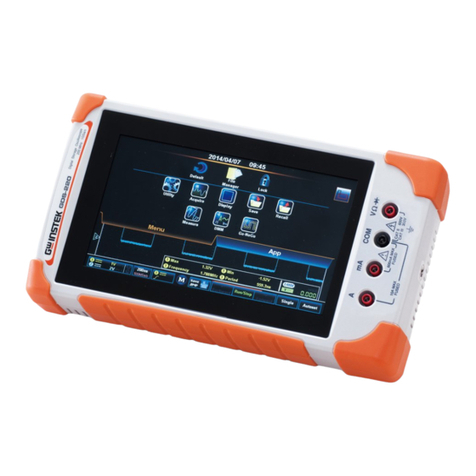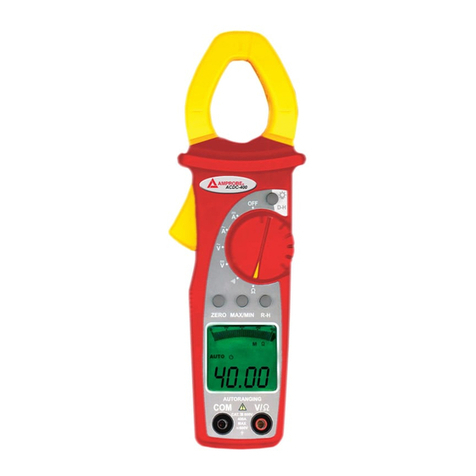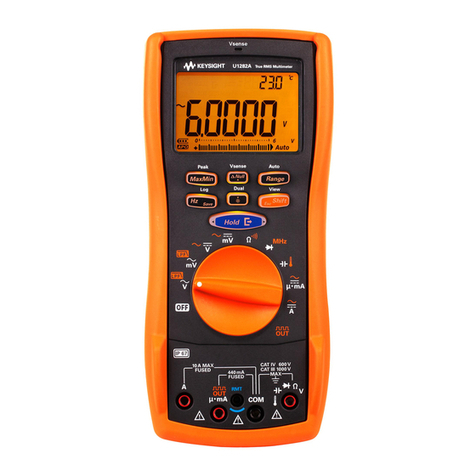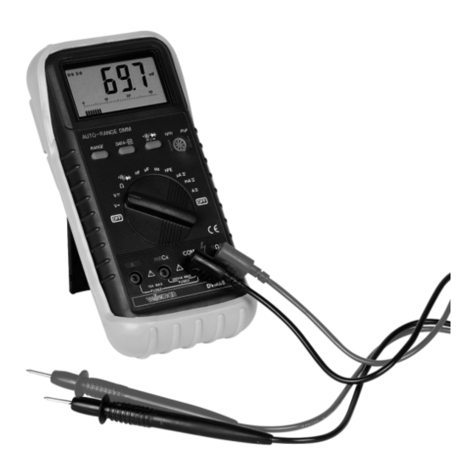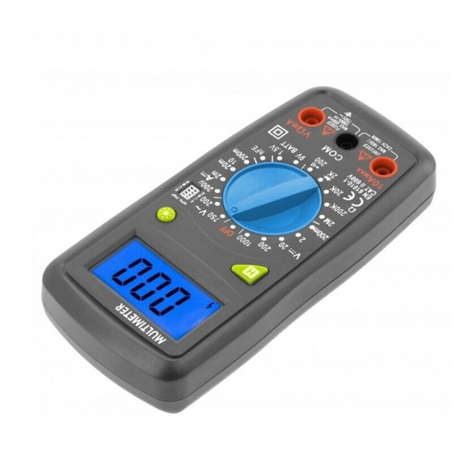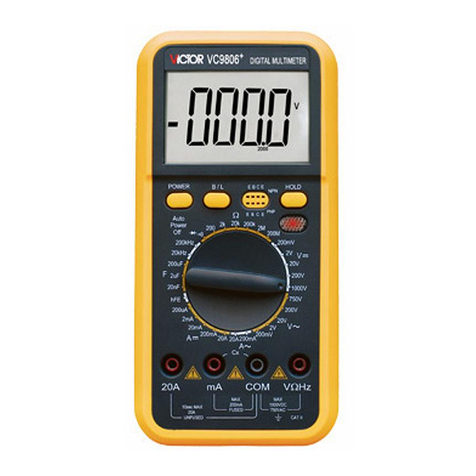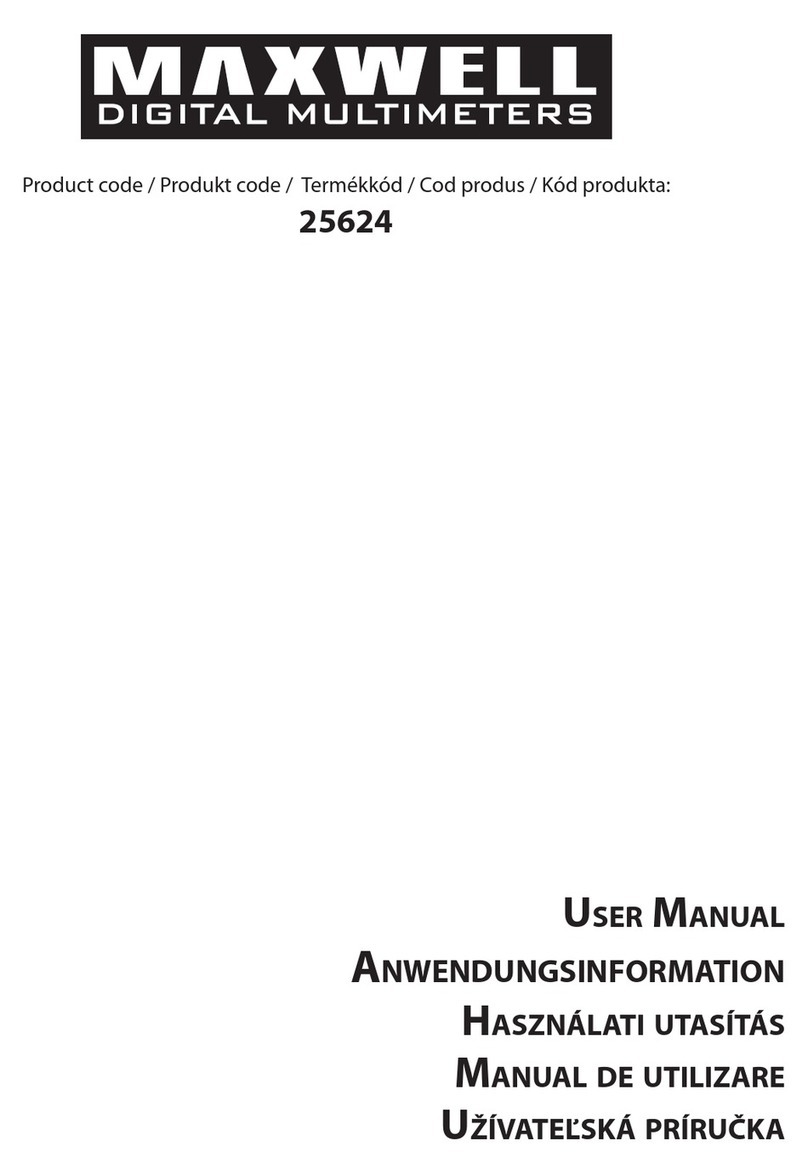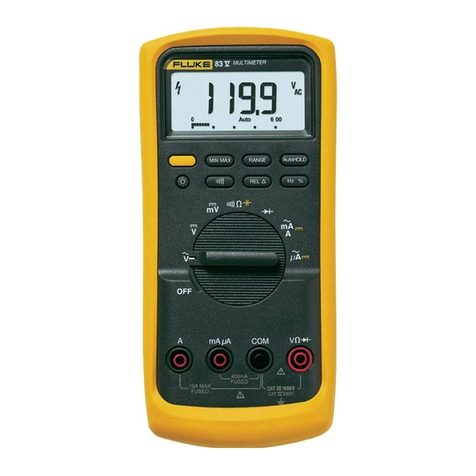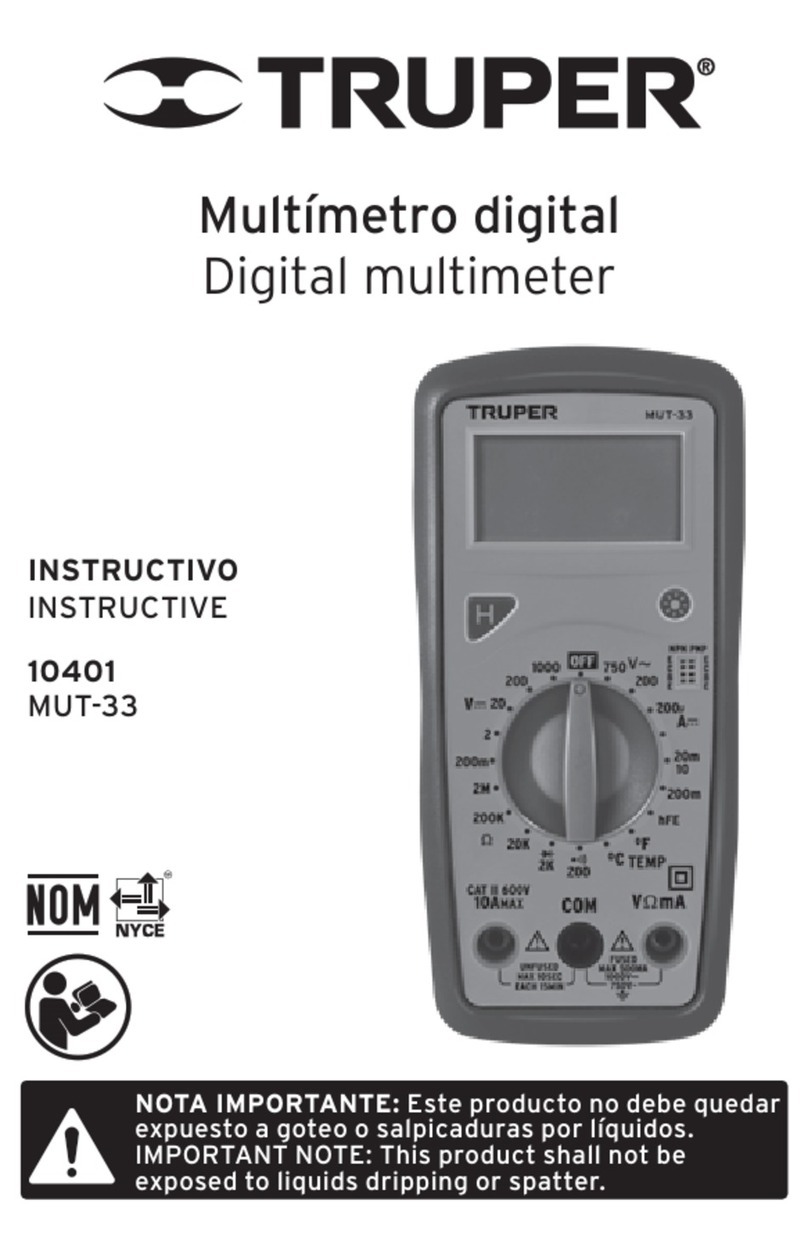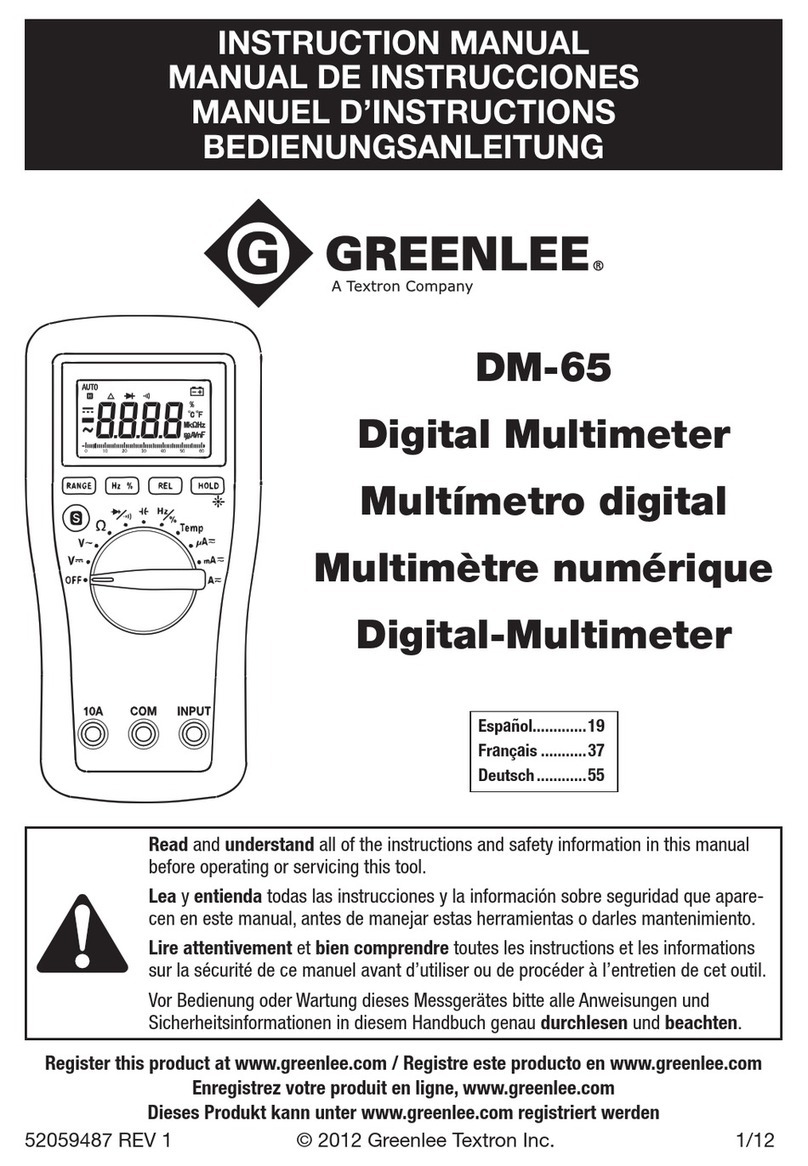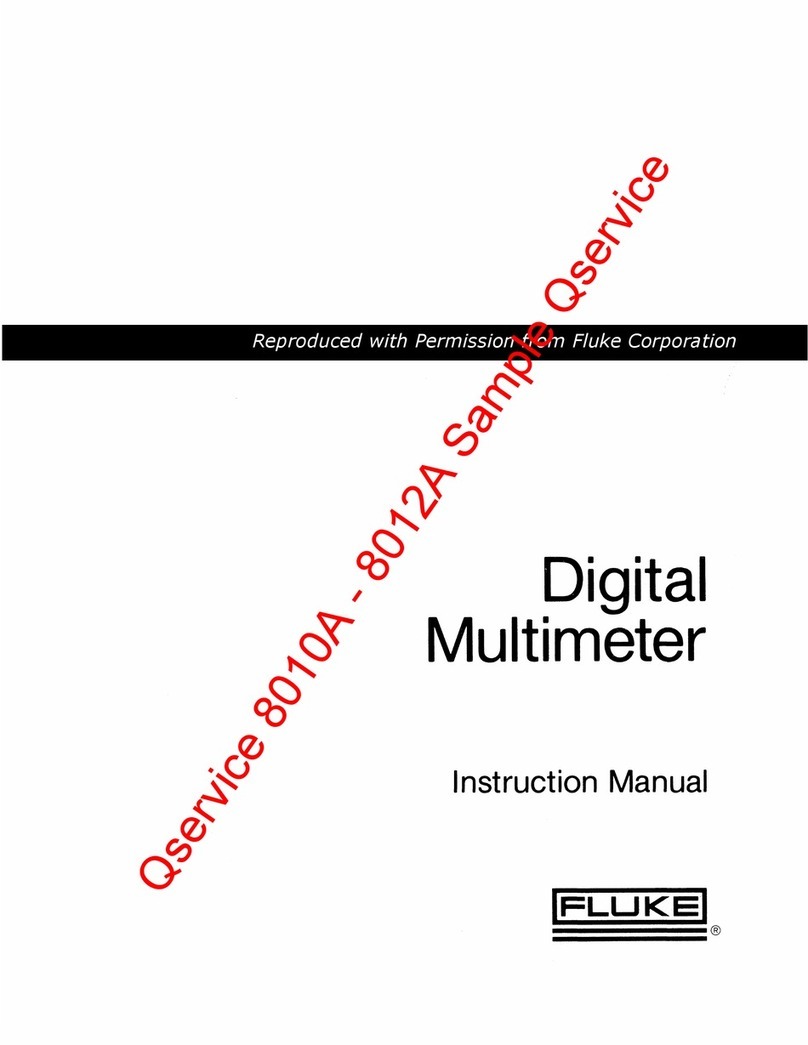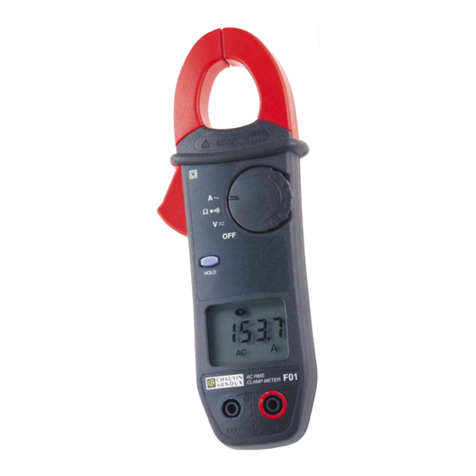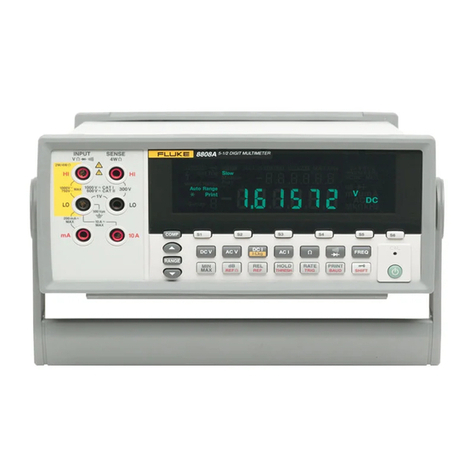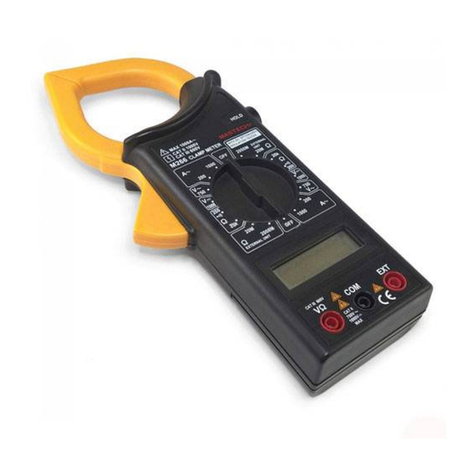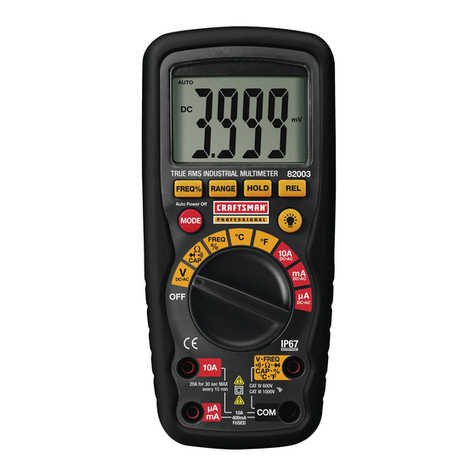Digitek DT-2844R User manual

DT
DTDT
DT-
--
-28
2828
284
44
44
44
4R
RR
R
4
44
4000 COUNTS AUTO
000 COUNTS AUTO000 COUNTS AUTO
000 COUNTS AUTO-
--
-RANGE
RANGERANGE
RANGE
AC+DC TRUE
AC+DC TRUEAC+DC TRUE
AC+DC TRUE-
--
-RMS
RMSRMS
RMS
DIGITAL MULTIMETER
DIGITAL MULTIMETERDIGITAL MULTIMETER
DIGITAL MULTIMETER
OPERATION MANUAL

1
1. ATIONSAFETY INFORM
SAFETY SYMBOLS
Warning! Dangerous Voltage (Risk of electric shock).
Caution! Refer to the user’s manual before using this Meter.
Double In ulation.
Alternating Current (AC).
Direct Current (DC).
Either DC or AC.
Ground (maximum permitte voltage between terminal an groun ).
US Safety Stan ar .
European Safety Stan ar
The symbol in icating separate collection for electrical an electronic
equipment.
The RESPONSIBLE BODY hall be made aware that, if the in trument
i u ed in a manner not pecified by the manufacturer, the protection
provided by the in trument may be impaired.
The finger or any part of your body hall not be beyond the barrier of
the te t probe when mea uring.
Individual protective equipment mu t be u ed if HAZARDOUS LIVE part in the
in tallation where mea urement i to be carried out could be ACCESSIBLE.
The following safety information must be observe to insure maximum personal safety uring
the operation at this meter.
1.1 Do not operate the meter if the bo y of meter or the test lea look broken.
1.2 Check the main function ial an make sure it is at the correct position before each
measurement.
1.3 When making current measurements ensure that the circuit not “live” before opening it in
or er to connect the test lea s.
1.4 Do not perform resistance, capacitance, temperature, io e an continuity test on a live
power system.
1.5 Do not apply voltage between the test terminals an test terminal to groun that excee
the maximum limit recor in this manual.
1.6 Exercise extreme caution when measuring live system with voltage greater than 60V DC
or 30V AC.
1.7 Change the battery when the “ ” symbol appears to avoi incorrect ata.
1.8 Use the DMM in oor, altitu e up to 2000m an temperature 5°C to 40°C.
Maximum relative humi ity 80% for temperatures up to 31°C, ecreasing linearly to
50% relative humi ity at 40°C.
1.9 In locations subject to ra io frequency interference, the pro uct may malfunction an it
resets automatically when leaving this environment.
2. SPECIFICATIONS
2.1 GENERAL SPECIFICATIONS
Display: LCD with a max. rea ing of 4000.
Range control: Auto range & Manual range control

2
Polarity: Automatic negative polarity in ication.
Zero a justment: Automatic.
Overrange in ication: The “OL” or “-OL” isplay.
Low battery in ication: Display " " sign.
Data hol : Display “DH” sign.
Relative measurement: Display “△” sign.
Auto Power Off: Display “APO” sign. When measurement excee s 10 minutes without
switching mo e an pressing key, the meter will switch to stan by mo e. Press any
key to exit stan by mo e. When restart the system, press an hol SELECT key to
isable auto power off.
Safety stan ar s: ETL, EMC/LVD. CAT Ⅲ
ⅢⅢ
Ⅲ 600V.
The meter is up to the stan ar s of IEC1010 Double Insulation,
Pollution Degree 2, Overvoltage Category Ⅲ.
Operating environment: Temperature 32 to104°F (0°C to 40°C), Humi ity ≤ 80% RH.
Storage environment: Temperature -4 to140°F (-20°C to 60°C), Humi ity ≤ 90% RH.
Power supply: One stan ar 9 volt battery (NEDA 1604, IEC 6F22 or equivalent).
Dimension: 165(H) x 83(W) x 36(D) mm
Weight: Approx. 360g (inclu ing battery).
2.2 ELECTRICAL SPECIFICATIONS
Accuracies are ± ( % of rea ing + number in last igit ), at 23 ± 5°C ,≤75% RH.
2.2.1 DC Voltage
Overloa protection: 600V DC or AC rms
Impe ance: 10MΩ,More than 100MΩ on 400mV range.
2.2.2 AC Voltage (
AC+DC True RMS
)
[1]
Range Accuracy ± ([% of Rea ing] + [Counts])
DC, 45Hz to 500Hz 500Hz to 1kHz 1kHz to 2kHz
0.4V,4V 1.0%+3 2.0%+3
40V,400V,600V 1.0%+3 2.0%+3
Impe ance : 10MΩ. More than 100MΩ on 400mV range.
Overloa protect:600V DC or AC RMS.
[1] All ac ranges are specifie from 1 % to 100 % of range. Below 5 % of range, a 10 counts. (In
the range 400mV, an a itional 2mV.).
Because inputs below 1 % of range are not specifie , it is normal for this an other true-rms meters
to isplay nonzero rea ings when the test lea s are isconnecte from a circuit or are shorte
together. For volts an amps, crest factor of ≤3 at 3000 counts, ecreasing linearly to 2 at full scale.
AC volts an AC amps are c-couple .
If the measurement of AC voltage contains more than DCV 250V, please choose manual range
600V.
2.2.3 DC Current
Range Accuracy ± ([% of Rea ing] + [Counts])
0.4V,4V,40V,400V 0.5%+2
600V 0.8%+3
Range Accuracy ± ([% of Rea ing] + [Counts])
400µA, 4000µA 1.5%+2
40mA, 400mA 1.5%+2
4A,10A
[1]
2.0%+3

3
Overloa protection: 0.5A/250V, 10A/250V fuse.
[1] 10A for 15sec each 15min maximum.
2.2.4 AC Current (
AC+DC True RMS
)
[1]
Range Accuracy ± ([% of Rea ing] + [Counts])
DC, 45Hz to 2kHz
400µA, 4000µA 2.0%+3
40mA, 400mA 2.0%+3
4A,10A
[2]
2.5%+3
Overloa protection: 0.5A/250V, 10A/250V fuse.
[1] All ac ranges are specifie from 1 % to 100 % of range. Below 5 % of range, a 10 counts.
Because inputs below 1 % of range are not specifie , it is normal for this an other true-rms
meters to isplay nonzero rea ings when the test lea s are isconnecte from a circuit or are
shorte together. For volts an amps, crest factor of ≤3 at 3000 counts, ecreasing linearly to 2 at
full scale. AC volts an AC amps are c-couple .
[2] 10A for 15sec each 15min maximum.
2.2.5 Re i tance
Overloa protection: 250V DC or AC rms。
2.2.6 Capacitance
Overloa protection: 250V DC or AC rms
2.2.7 Diode and Audible continuity te t
Range Description Test con ition
Display rea approximately
forwar voltage of io e
Forwar DC current approx. 0.4mA.
Reverse DC voltage approx. 2.8V
Built-in buzzer soun s if
resistance is less than 100Ω
Open circuit voltage
approx. 0.5V
Overloa protection: 250V DC or AC rms
2.2.8 Frequency
Range Accuracy ± ([% of Rea ing] + [Counts])
10Hz~10MHz ± ( 0.1%+5 )
Sensitivity: sine wave 0.6V rms (10MHz: 1.5V rms)
Overloa protection: 250V DC or AC rms
2.2.9 Duty cycle
0.1%~99.9%: ± ( 2.0%+2 ) Frequency lower than 10kHz
Sensitivity: sine wave 0.6V rms
Overloa protection: 250V DC or AC rms
Range Accuracy ± ([% of Rea ing] + [Counts])
400Ω,4kΩ,40kΩ, 400KΩ,4MΩ 1.0%+2
40MΩ 2.0%+3
Range Accuracy ± ([% of Rea ing] + [Counts])
40nF ± ( 3.0%+10 )
400nF,4µF ± ( 2.5%+5 )
40µF ± ( 5.0%+10 )
400µF,4000µF ± ( 20.0%+20)

4
3. OPERATION
3.1 DC Voltage Mea urement
1) Connect the black test lea to "COM" socket an re test lea to the "VΩHz" socket.
2) Set the selector switch to esire “V” position.
3) Measure the voltage by touch the test lea tips to the test circuit where the
value of voltage is nee e .
4) Rea the result from the LCD panel.
3.2 AC Voltage Mea urement
1) Connect the black test lea to "COM" socket an re test lea to the "VΩHz" socket.
2) Set the selector switch to esire “V” position.
3) Measure the voltage by touch the test lea tips to the test circuit where the
value of voltage is nee e .
4) Rea the result from the LCD panel.
5) Press “Hz/DUTY” key to measurement frequency or duty cycle.
3.3 DC and AC Current Mea urement
1) Connect the black test lea to "COM" socket. For measurement up to 400mA, connect
the re test lea to the "µAmA" socket; for measurement
from 400mA to 10A, connect the re test lea to the "10A" socket
2) Set the selector switch to esire “µA ”、“mA ” or “A” position.
3) Press “SELECT” key to choose “DC” or “AC” measurement.
4) Remove power from the circuit un er test an open the normal circuit path where the
measurement is to be taken. Connect the meter in series with
the circuit.
5) Rea the result from the LCD panel.
6) On AC range, press “Hz/DUTY” key to measurement frequency or duty cycle.
3.4 Re i tance Mea urement
1) Connect the black test lea to "COM" socket an re test lea to the "VΩHz" socket.
2) Set the selector switch to esire “ ” position.
3) Press “SELECT” key to choose Re i tance measurement.
4) Connect tip of the test lea s to the points where the value of the resistance is nee e .
5) Rea the result from the LCD panel.
Note:
When take resistance value from a circuit system, make sure the power is cut
off an all capacitors nee to be ischarge .
3.5 Capacitance Mea urement
1) Connect the black test lea to "COM" socket an re test lea to the "VΩHz" socket.
2) Set the selector switch to esire “ ” position.
3) Press “SELECT” key to choose Capacitance measurement.
4) Connect tip of the test lea s to the points where the value of the capacitance is nee e .
5) Rea the result from the LCD panel.
Note:
a) Before testing, ischarge the capacitor by shorting its lea s together. Use caution in
han ing capacitors because they may have a charge on them of consi erable power
before ischarging.
b) Before testing, press “REL△” key to eliminate the zero error.
c) When testing 4000µF capacitor, note that there will be approx. 30 secon s time lag.
3.6 Diode and Audible continuity Te t
1) Connect the black test lea to "COM" socket an re test lea to the "VΩHz" socket.
2) Set the selector switch to esire “ ” position.
3) Press “SELECT” key to choose Diode or Audible continuity measurement.
4) Connect the test lea s across the io e un er measurement, isplay shows the approx.

5
forwar voltage of this io e.
5) Connect the test lea s to two point of circuit, if the resistance is lower than approx. 100Ω,
the buzzer soun s.
Note:
Make sure the power is cut off an all capacitors nee to be ischarge un er this
measurement.
3.7 Frequency and Duty cycle mea urement
1) Connect the black test lea to "COM" socket an re test lea to the "VΩHz" socket.
2) Set the selector switch to esire “Hz” position.
3) Press “Hz/DUTY” key to choose Frequency or Duty cycle measurement.
4) Connect the probe across the source or loa un er measurement.
5) Rea the result from the LCD panel.
3.8 Data Hold
On any range, press the “HOLD” key to lock isplay value, an the “DH” sign will appear on
the isplay, press it again to exit.
3.9 MAX/MIN Hold
Press the “MIN/MAX” key to lock MAX or MIN value, an the “MAX” or “MIN” sign will
appear on the isplay, press it over 2 secon s to exit. It can not isplay bar graph on
MAX/MIN HOLD mo e.
3.10 Relative mea urement
Press the “REL△” key, you can measure the relative value an “△” sign will appears on the
isplay, the auto range mo e be change to manual range mo e. Press it again to exit
relative measurement an “△” sign isappears, but you can not go back to auto range mo e.
This function is non effective on Hz /DUTY measurement. It can not isplay bar graph on
Relative mea urement mo e.
3.11 Auto/Manual range
The auto range mo e is a convenient function, but it might be faster to manually set the
range when you measure values that you know to be within
a certain range.
To select manual range, repeate ly press “RANGE” key until the isplay shows the esire
range. The range steps upwar as you press “RANGE” key. The meter will go back to auto
range mo e when you press “RANGE” key for more than 2 secon s. It can not select
manual range mo e on Hz/DUTY, capacitance an temperature range.
Caution: while using the manual range mo e, if “OL” sign appears on the isplay,
imme iately set range to a higher.
3.12 Back Light
On any range, press the “HOLD” key over 2 secon s to light the back light, press it again for
more than 2 secon s to wink the light. The light can wink automatically after 10 secon s
too.
4. Battery replacement
1) When the battery voltage rop below proper operation range, the “ ”
symbol will appear on the LCD isplay an the battery nee to change .
2) Before changing the battery, set the selector switch to “OFF” position.
Open the cover of the battery cabinet by a screw river.
3) Replace the ol battery with the same type battery.
4) Close the battery cabinet cover an fasten the screw.
Caution: Dispose the use batteries accor ing to the rules, which are efine
by each community.
5. Fu e replacement

6
1) This meter is provi e with a 0.5A/250V fuse to protect the current measuring circuits
which measure up to 500mA, with a 10A/250V
fuse to protect the 10A range.
2) Ensure the instrument is not connecte to any external circuit, set
the selector switch to “OFF” position an remove the test lea s from the terminals.
3) Remove the screw on the battery cabinet cover to open the battery cabinet cover, then
remove the three screws on the bottom case an lift the bottom case. Replace the ol fuse
with the same type an rating:
5×20mm 0.5A/250V or 6.3×25.4mm 10A/250V fuse.
4) Close the bottom case an fasten the screws, then close the battery cabinet cover an
fasten the screw.
6. MAINTENANCE
1) Before open the battery cover, isconnect both test lea an never uses the meter before
the battery cover is close .
2) To avoi contamination or static amage, o not touch the circuit boar without proper
static protection.
3) If the meter is not going to be use for a long time, take out the battery an o not store
the meter in high temperature or high humi ity environment.
4) Repairs or servicing not covere in this manual shoul only by qualifie personal.
5) Perio ically wipe the case with a ry cloth an etergent. Do not use abrasives or
solvents on the meter.
For any questions, please contact Kaito Electronics,Inc or visit
www.multimeterwarehouse.com
k8092844-2
Table of contents
